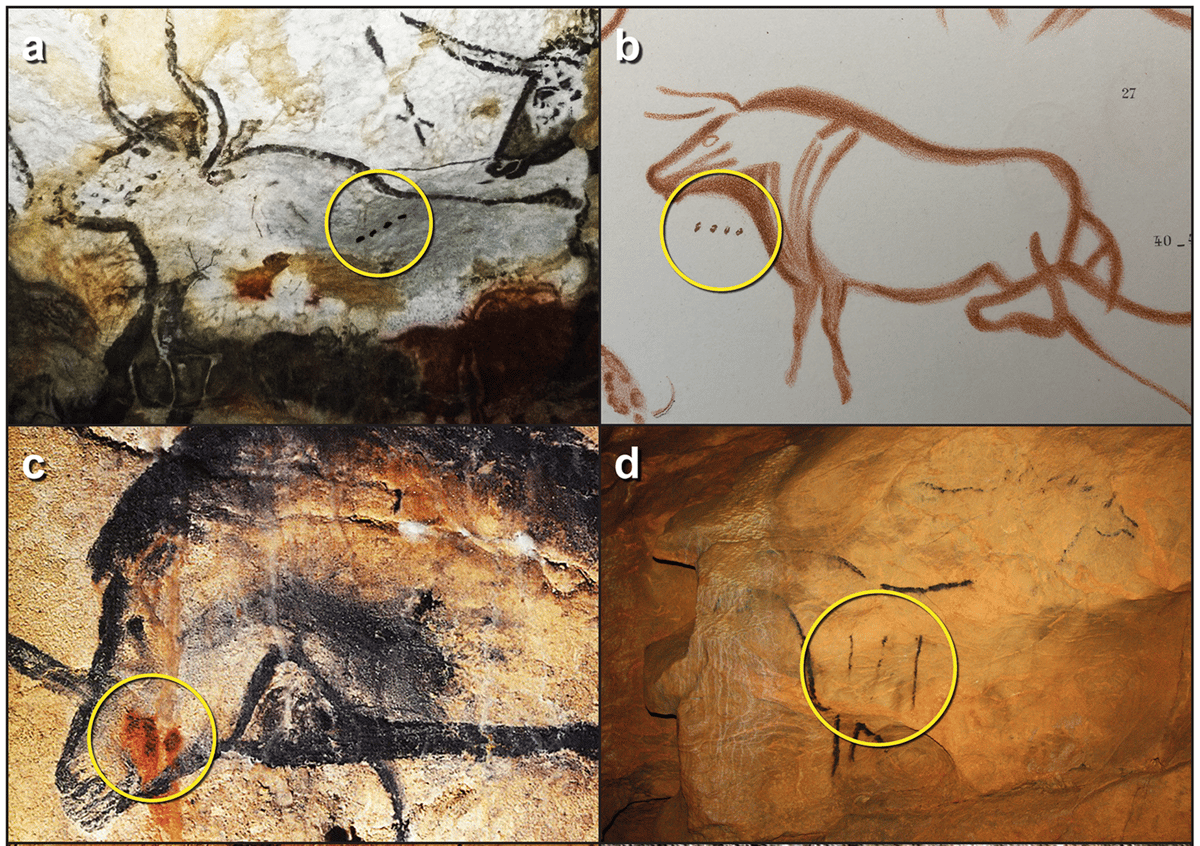Were the Earliest Cave Paintings Calendars?

Since striking ancient cave paintings in southern Europe were first discovered more than a century ago, modern humans have tried to figure out if they have a meaning beyond being staggering works of art. Are they early animations? Examples of a primeval need to tell stories? An antique backdrop for us to project contemporary mistakes?
A new theory proposes that the repeatedly occurring nonfigurative signs (the ones that don’t look like anything concrete) are a kind of protowriting. This guess has been floated before, but this time, a number of earlier proposals are synthesized, and there’s a semantics attached: the symbols in the caves, these researchers argue, were used to mark time:
We hypothesize that the number of lines/dots, or the ordinal position of
symbols, in sequences associated with depictions of prey taxa in Upper Palaeolithic art, convey information about events in those animals’ annual lives important to hunter-gatherers, expressed in lunar months RBS, i.e. anchored to the start of the bonne saison. That information is likely to reflect birthing, and possibly mating and/or migration of the animals of concern in the region in which the images are found (or originated).
A relatively simple statistical analysis shows good correlation with the number of marks and the number of lunar months between cycles of mating/birthing. In this way, early hunter/gatherers might have been able to track the availability of bird eggs, or to find new prey.
This would be a revolution in the history of recorded information:
Although a series of marks can of course be ambiguous, the Upper Palaeolithic written system was thus clear, unambiguous and permanent, and could have widespread meaning irrespective of any linguistic barriers (about which, of course, we know nothing), particularly given the fact that our database contains samples from across western—and some central—Europe. It made possible the accumulation and transmission of intelligible information over multiple generations, independent of the need to maintain parallel oral explanations (although of course we do not propose that these simply disappeared). This was clearly much more than a simple ‘tally’ of accumulated information. We believe that the numeric notational marks associated with the animals constituted a calendar, and given that it references natural behaviour in terms of seasons relative to a fixed point in time, we may refer to it as a phenological calendar, with a meteorological basis. It may be of greater significance, however, that it significantly backdates by thousands of years the permanent combination of information (in the form of numerosity/ordinality) with its subject (the animal/symbol).
But is it writing?
In our reading, the European Upper Palaeolithic system functioned to record a subject and information about the behaviour of that subject expressed in relation to natural events; it therefore expressed far more than the tablets recording numbers of commodities from Uruk-period Mesopotamia (Steinkeller 1992). In the sense of the Sumerological use of the terms, we suggest that we can accord it the function of a script. But could the information that it recorded really be intelligible without at least the underpinning nouns for the animals, the moon and its phases, and the bonne saison and its defining events, in addition to the actions of mating and birthing? We will presumably never know the specific words for these in whatever languages were spoken in Upper Palaeolithic Europe, but we can assume that our script could be communicated orally by using them. Is this, then, not the definition of writing?
We may not be convinced that the Upper Palaeolithic sequences and associated symbols can be described as written language, given that they do not represent grammatical syntax, but they certainly functioned in the same way as proto-cuneiform… We do not want to press the controversial (and in many senses, semantic) question of whether writing was a Palaeolithic invention; perhaps it is best described as a proto-writing system, an intermediary step between a simpler notation/convention and full-blown writing. Assuming we have convinced colleagues of our correct identification, there will no doubt be a lively debate about precisely what this system should be called, and we are certainly open to suggestions. For now, we restrict our terminology to proto-writing in the form of a phrenological/meteorological calendar. It implies that a form of writing existed tens of thousands of years before the earliest Sumerian writing system.
To translate this out of scholarly passive-aggressiveness: “you don’t have to call it writing if you want to be dicks about it, but we all know it’s writing, chumps.”





Stay Connected